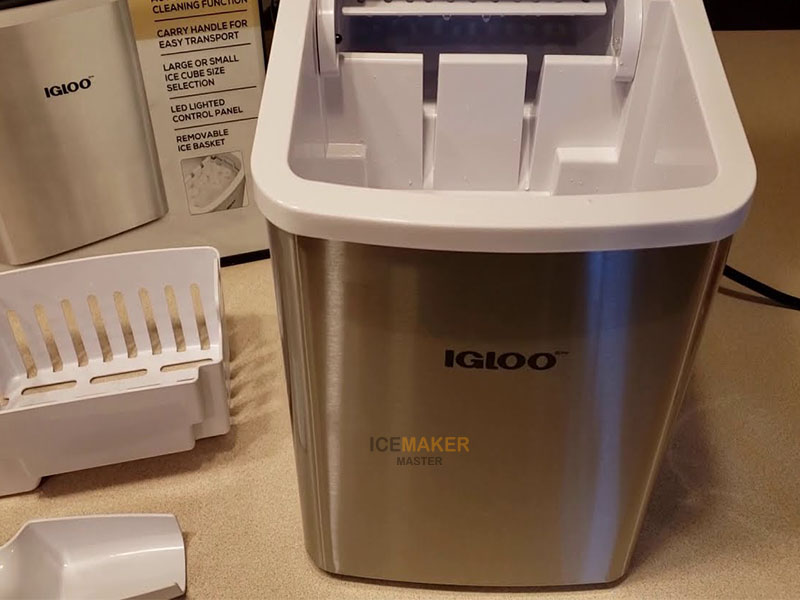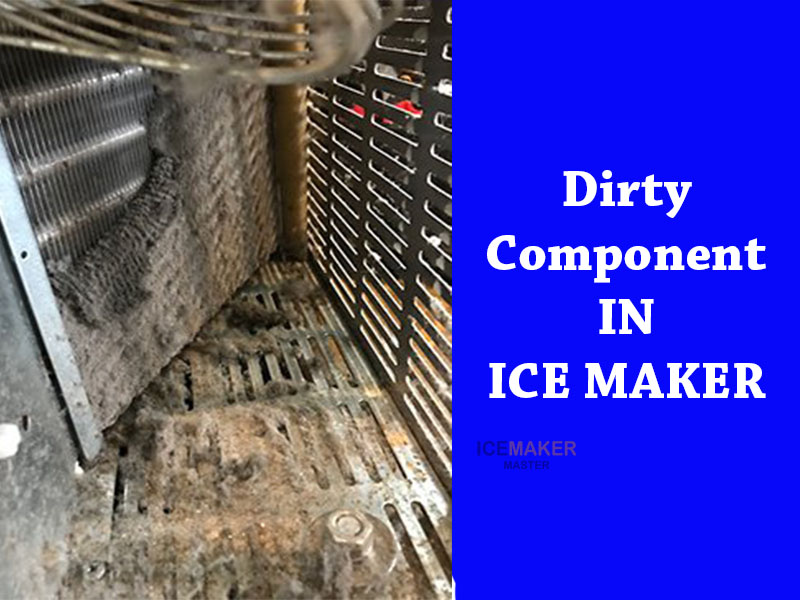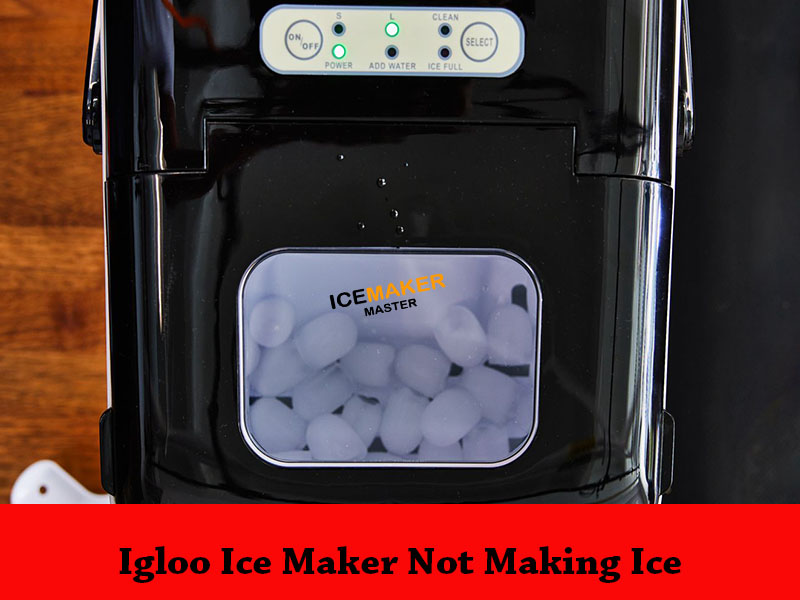Ice makers are the unsung heroes of our kitchens as it adds a touch of convenience to our daily lives for making cold thing with ice. Imagine a hot summer day without the clink of ice cubes in your drink or a party where beverages lack the refreshing chill. These situations become real problems when your reliable ice maker unexpectedly stops working.
Out of all the ice makers out there, the Igloo ice maker is known as a dependable friend. But sometimes it can also stop making ice and then the puzzling question which you can ask is, why is my Igloo ice maker not working.
Right now, it is clear how important it is for your ice maker to work well. Let’s figure out why your ice maker is not making ice and get back to enjoying cool drinks without any hassle.
How ice maker works
Knowing how your Igloo ice maker works is important to fix any problems that might come up. Simply put, the way it works is straightforward and gets the job done well. The process begins with water being pumped into the ice maker’s mold, where it solidifies into ice cubes.

After the ice cubes freeze, a heating element kicks in, and the ice is released into the ice bin. A metal arm works as a signal which tells you when the ice bin is full. This simple process is the foundation of how your ice maker works.
With this information, you will be better prepared to figure out and fix any issues that might come up in making ice. Now we will see the issues which could affect your ice maker.
Check the Power Connection
If your ice maker is not making ice then it might be because it does not have enough power. First, make sure your Igloo ice maker is plugged in properly and the outlet is working. Check for any issues like a tripped circuit breaker or a blown fuse in your electrical panel.
This is the first thing to check when your ice maker is acting up and make sure it has a good connection to power. Occasionally, a tripped circuit breaker or a blown fuse may be the cause of the power hiccup, prompting a need to inspect your electrical panel.
Checking the power supply is a simple but important step in fixing your ice maker. It helps make sure the electrical connection, which is like the heart of the machine, is strong and working well. Doing this sets the stage for solving problems with your ice maker and gets it ready to make ice again.
Water Issue
Water is very important for your ice maker, without water it is impossible for your ice maker to make ice, as water is the key component for ice. If your ice maker is acting up, the first thing to do is check if the water supply to your Igloo ice maker is connected and turned on.
Check the water inlet valve for clogs or leaks. If the valve is not working right, it can mess up the water flow to your ice maker which will make it hard for the Igloo ice maker to make ice.
By doing these checks and fixing any water problems, you make it easier for your ice maker to do its job smoothly. This way, it can get back to making ice and your issue can be solved.
Temperature of the Igloo Ice Maker
The inside temperature of your Igloo ice maker is vital for making ice effectively. It needs to be cold enough to freeze water quickly and consistently. If the temperature is too high, it can slow down the freezing process, resulting in smaller or irregularly shaped ice cubes.

Maintaining a stable and appropriately low inside temperature is crucial for uniform ice cube formation and prevents blockages in the water lines. You can fix the temperature according to the user guide or the manufacturer guide. Fluctuations or variations in temperature can lead to uneven freezing, affecting the quality of the ice produced.
Therefore, keeping the inside of your Igloo ice maker within the recommended temperature range ensures efficient ice production, providing a steady supply of well-formed and refreshing ice cubes.
Environmental Temperature
Ice makers work best in certain conditions, and the temperature around them is really important. Make sure the room is not too hot or too cold, it should be between 50°F and 100°F for the ice maker to do its job well.
If your Igloo ice maker is placed in an excessively hot area, it could struggle to work well. In such cases, relocate the ice maker to a cooler spot, this is necessary for optimal performance of the ice maker.
Knowing about temperature is a reminder that where your ice maker is placed affects how well it works. Making sure it is in the right conditions helps your Igloo ice maker work really well, making ice all the time to keep your drinks nice and cool.
Also Read - How to reset igloo ice maker | Steps & Guide
Ice Bin Issue
If your ice maker’s bin is overflowing with ice, it is as if the ice maker is staging a protest against your quest for chilled drinks. The metal arm, which keeps track of the ice level, might be stuck or out of place.
To get your ice maker working again, simply move the arm back into its place gently or clear away anything that might be in its way. Doing this easy fix ensures that your ice maker can keep making ice without any problems.
The metal arm acts as a sentinel, signaling when the bin is full, but if it is hindered, it can disrupt the flow of ice production. By addressing this issue, you regain control over your ice maker.
Dirty Components
Similar to other helpful kitchen gadgets, your Igloo ice maker requires some care and attention. As time goes on, mineral deposits and impurities can accumulate and make your machine less efficient.

It is important to give your ice maker a good cleaning, focusing on the water lines, mold, and various components. By thorough cleaning your igloo ice maker helps to remove any accumulated gunk that might be slowing down your ice maker’s performance.
By paying attention to these details and maintaining a clean machine, you ensure that your Igloo ice maker continues to function efficiently, producing nice ice cubes for your drinks. Regular cleaning is the key to keeping your ice maker in tip-top shape.
Professional Help
If your ice maker does not have any of the above issues or by solving these issues your ice maker still not making ice then there is any big issue in your Igloo ice maker which can be solved by the professionals only.
In this case contact to the customer service center and they will provide you proper help. If your ice maker is too old then you can take it to the ice maker mechanic also they can also solve your issue, but I will suggest you to call the service center.
FAQ
What should I do if the metal arm is not moving?
The metal arm that detects the ice level may be stuck or misaligned. Gently reposition the arm or clear any obstruction to allow the ice-making process to resume.
How does the inside temperature of the ice maker affect ice production?
The inside temperature must be appropriately low for efficient freezing. If it is too high, it can lead to slower freezing times and irregularly shaped ice cubes. Maintaining a stable and cold inside temperature ensures uniform ice cube formation.
Can extreme temperatures in the surroundings impact the ice maker?
Yes, extreme temperatures, whether too hot or too cold, can affect the ice maker’s efficiency. Placing the ice maker in a cooler area within the recommended temperature range helps optimize its performance.
How often should I clean my Igloo ice maker?
Regular cleaning is recommended to prevent mineral deposits and impurities from affecting the machine’s efficiency. Cleaning every few months, with a focus on water lines, mold, and components, ensures consistent and refreshing ice production.
What should I do if my ice maker is still not working after troubleshooting?
If issues persist, consult the user manual for specific instructions or contact Igloo customer support for assistance. There might be underlying technical problems that require professional attention.
Why does cleaning the ice maker matter for ice quality?
Regular cleaning removes mineral deposits and impurities that can affect the taste and quality of the ice. It also helps maintain the overall hygiene of the ice maker, ensuring consistently refreshing ice cubes.
How does the water inlet valve impact ice production?
The water inlet valve helps water go into the ice maker. Check for any clogs or leaks in the valve, as a malfunction can hinder water supply, affecting the ice-making process.
Conclusion
Tending to your Igloo ice maker’s well-being is a straightforward task with remarkable rewards. By checking power connections, ensuring water flows freely, maintaining suitable temperatures, and giving it a good cleaning, you empower your ice maker to function seamlessly. Remember, it is a versatile companion capable of overcoming power issues, water woes, temperature troubles, and more. Armed with this knowledge, troubleshooting becomes an accessible feat for any frozen water enthusiast.
So, stay cool and engaged in simple maintenance practices to guarantee a continuous flow of refreshing ice for your beverages.

